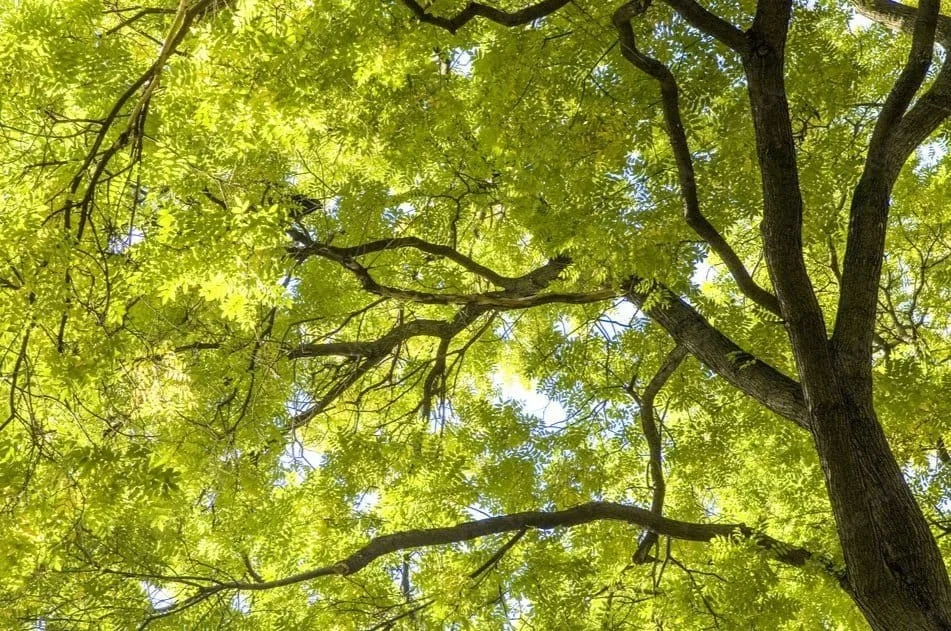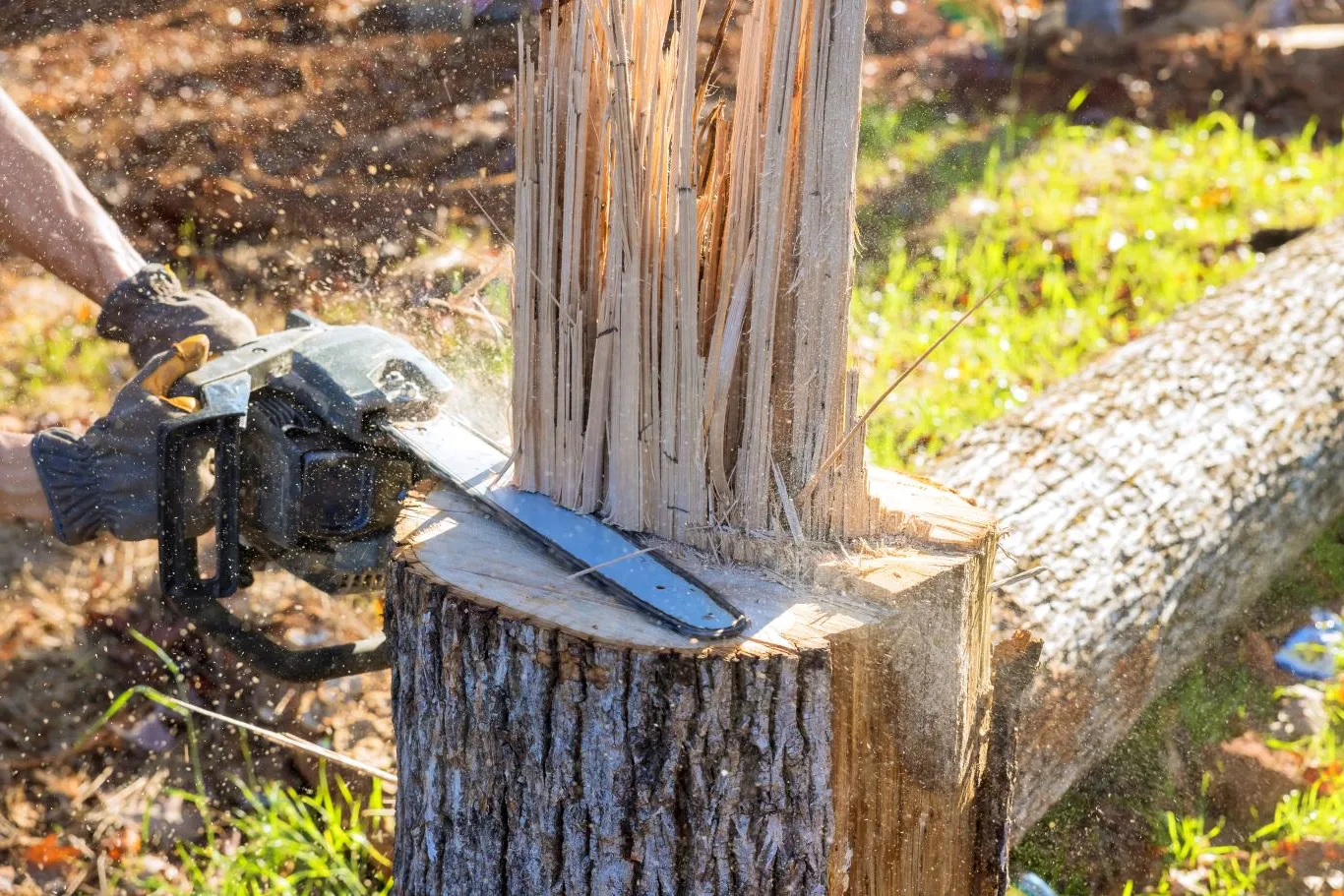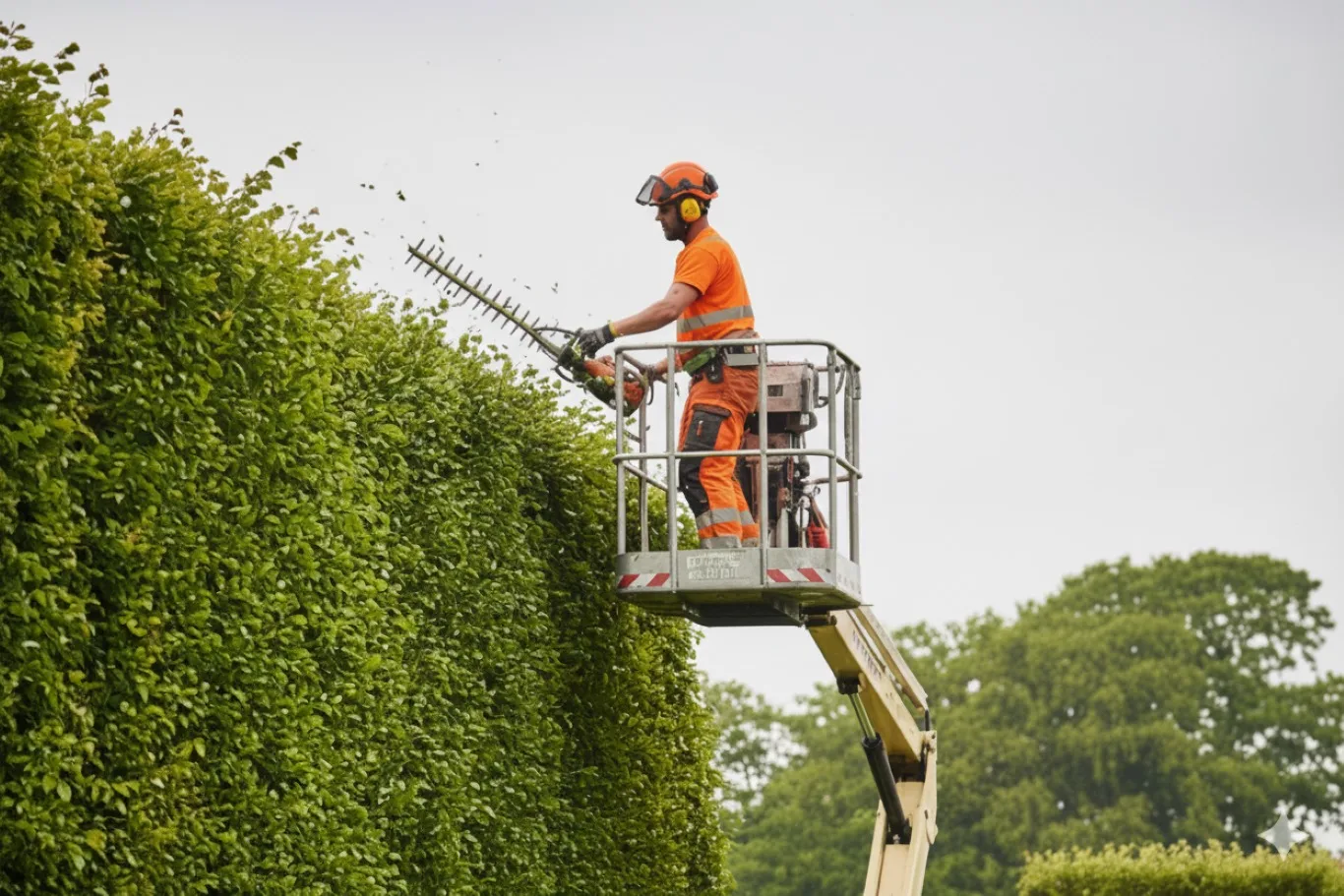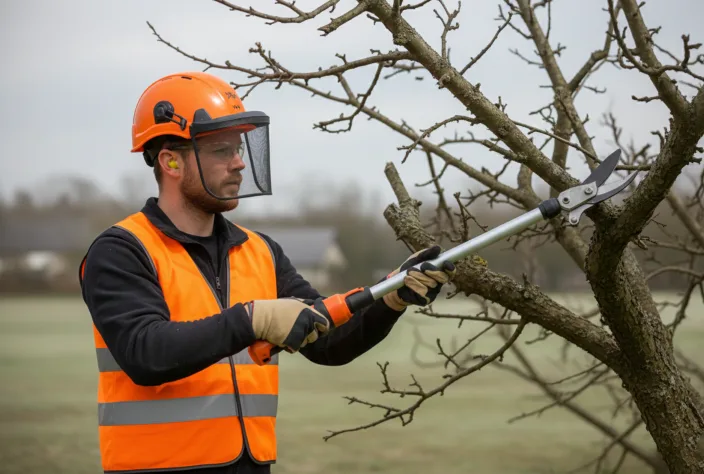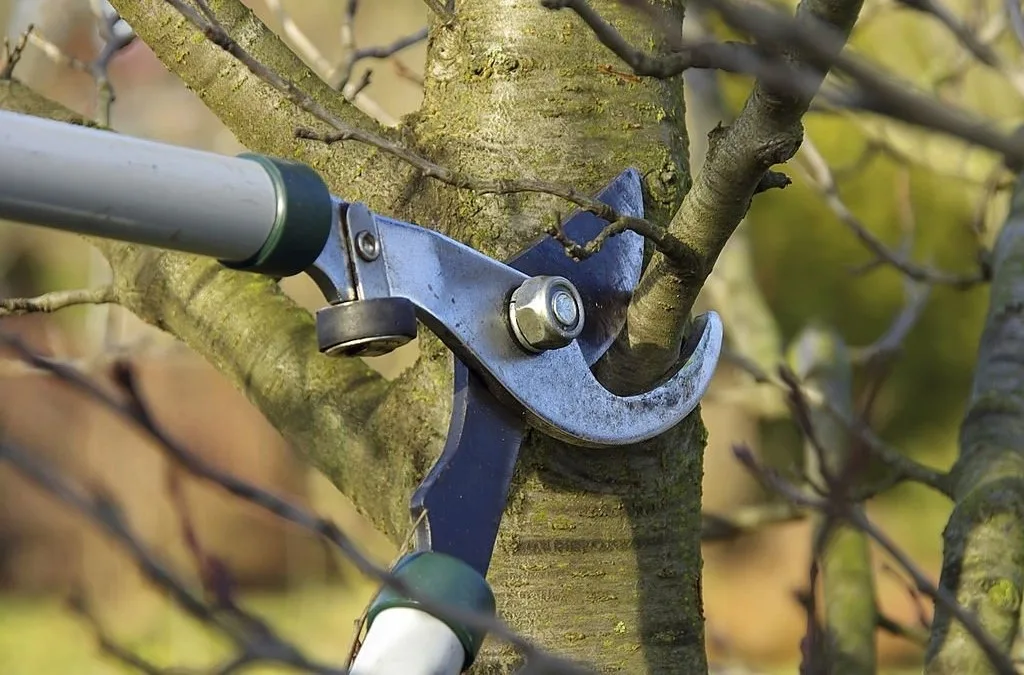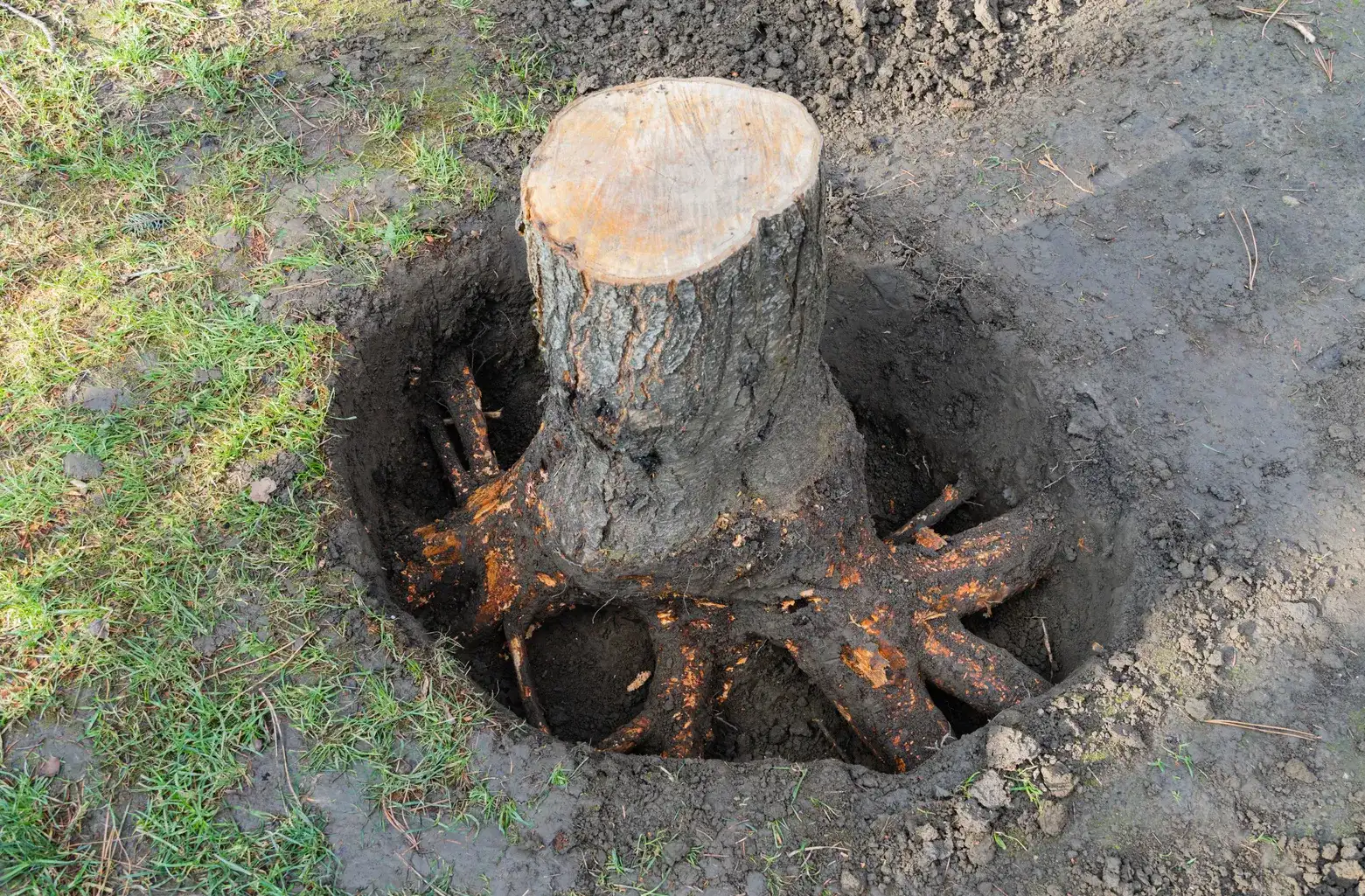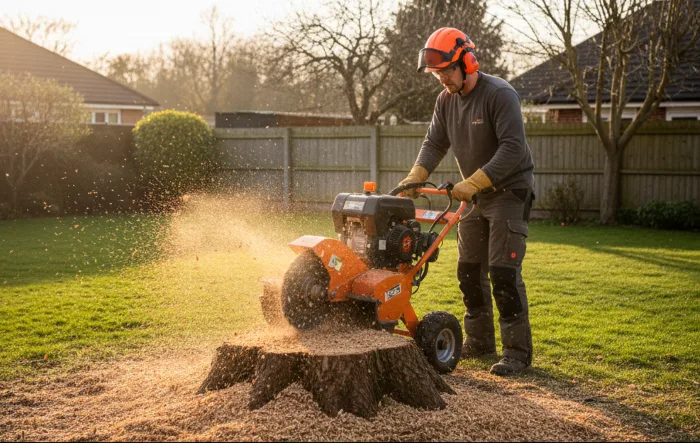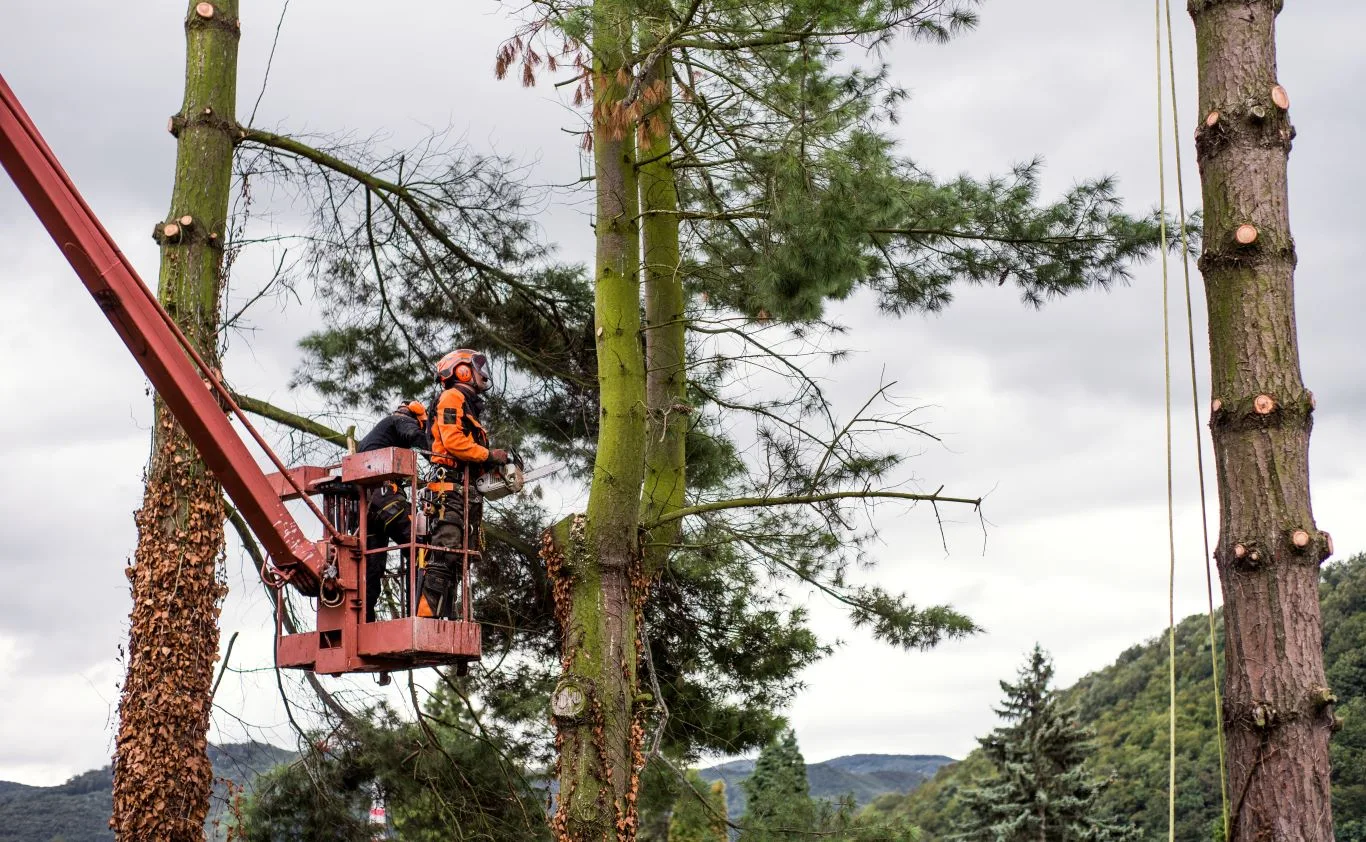As experienced arborists serving Essex and surrounding areas, we often face the challenging task of removing Ash trees (Fraxinus excelsior). While these graceful trees have long been a cherished part of the British landscape, the spread of Ash Dieback disease has made their removal an increasingly common necessity. In this comprehensive guide, we’ll explore the reasons for Ash tree removal, the intricate process involved, and crucial considerations to keep in mind.
Why Remove an Ash Tree?
Before we delve into the removal process, it’s important to understand the reasons why Ash might need to be removed:
- Ash Dieback Disease: This fungal disease (Hymenoscyphus fraxineus) is the most common reason for Ash removal in recent years. It causes leaf loss, crown dieback, and bark lesions.
- Other diseases or pest infestations: Ash can also be affected by other issues such as Ash bark beetles or Armillaria root rot.
- Structural issues: As they age or due to disease, Ash trees can develop weak branches or trunk decay, posing safety risks.
- Storm damage: Severe weather can cause irreparable damage to Ash trees, necessitating removal.
- Inappropriate location: Sometimes Ash trees need to be removed if they’re too close to buildings or interfering with utilities.
- Proactive management: In some cases, seemingly healthy Ash trees are removed as part of broader disease management strategies.
The Removal Process
Removing an Ash tree, especially one affected by Ash Dieback, requires careful planning and execution. Here’s an overview of our professional approach:
1. Comprehensive Assessment
- The tree’s size, age, and health status, with particular attention to signs of Ash Dieback
- Surrounding structures, vegetation, and wildlife
- Access for equipment and personnel
- Potential hazards (e.g., power lines, uneven terrain)
- Presence of protected species that might be using the tree
2. Legal and Safety Considerations
- Check if the tree is protected by a Tree Preservation Order (TPO)
- Verify if it’s in a Conservation Area
- Obtain necessary permits from local authorities
- Ensure compliance with wildlife protection laws
- Assess the extent of the disease and its impact on tree stability
- Determine if the tree is safe to climb or if other access methods are needed
3. Detailed Planning
- Determine the felling direction or dismantling strategy
- Identify equipment needs (e.g., chainsaws, rigging equipment, mobile elevated work platforms)
- Plan for traffic management if necessary
- Develop a strategy for wood disposal, considering biosecurity measures if the tree is diseased
4. Stringent Safety Measures
- Establish a generous safety perimeter around the work area
- Ensure all team members wear appropriate personal protective equipment (PPE)
- Conduct a detailed pre-work safety briefing, including specific precautions for diseased trees
- Have a certified first aider on site at all times
5. Specialised Removal Techniques
The specific technique used depends on the Ash tree’s size, location, and health: Straight Felling: For Ash trees in open areas with sufficient space, we may use traditional felling techniques. However, this is less common with diseased Ash trees due to unpredictable wood structure. Sectional Dismantling: This is the most common method for Ash trees, especially those affected by dieback:
- The tree is carefully dismantled from the top down
- We use sophisticated rigging systems to lower pieces safely to the ground
- For diseased trees, we often use mobile elevated work platforms instead of climbing to ensure worker safety
Crane Assisted Removal: For large Ash trees or those in difficult locations, we use cranes to lift sections of the tree away. This method is particularly useful for diseased trees that are unsafe to climb.
6. Stump Management
- Stump grinding is the most common method, using machines to grind the stump and surface roots below ground level
- For diseased trees, we ensure the stump grinder is thoroughly cleaned afterwards to prevent disease spread
- In some cases, we may recommend chemical stump treatment to prevent regrowth
7. Thorough Site Clean-up and Biosecurity
- Remove all debris, including leaves which can harbor fungal spores
- Chip material on site where possible to minimize disease spread
- Disinfect all tools and equipment before leaving the site
- Dispose of diseased material according to local regulations, often requiring incineration or deep burial
Special Considerations for Ash Trees
- Ash Dieback Considerations: Trees with Ash Dieback can become brittle and unpredictable, requiring extra caution during removal.
- Rapid Decay: Ash wood decays quickly once dead, making older dead trees particularly dangerous to work on.
- Wildlife Habitat: Ash trees often provide important habitat for wildlife. We always check for nesting birds, bats, and other protected species before removal.
- Wood Properties: Ash wood is strong but flexible, which can affect how it behaves during felling and processing.
- Regrowth: Ash trees can regrow from stumps, so complete removal or stump treatment is often necessary.
- Ecological Impact: Given the widespread loss of Ash trees, we always consider the ecological impact of removal and suggest mitigation measures where appropriate.
After Removal: Next Steps
- Replanting: We can advise on suitable species for replanting, considering the local ecosystem and the potential for future diseases.
- Wood Utilization: Despite disease, Ash wood can often still be used. We can help arrange for the wood to be milled for lumber or cut for firewood, if appropriate.
- Habitat Creation: Parts of the tree can be used to create wildlife habitats in other areas of your property.
- Monitoring: We recommend monitoring other Ash trees in the vicinity for signs of disease.
When to Call a Professional
- Any Ash tree showing signs of disease
- Trees near structures or power lines
- Large Ash trees, regardless of their health status
- Any situation where you’re unsure about safety or legal requirements
As professional arborists, we have the experience, specialised equipment, and insurance to handle Ash removals safely and efficiently. We ensure all work is carried out in compliance with local regulations, wildlife protection laws, and biosecurity best practices. Remember, while Ash tree removal has become increasingly necessary due to Ash Dieback, it should still be approached with careful consideration. If you’re concerned about an Ash on your property, contact us for a professional assessment. In some cases, careful management may be an alternative to removal. By choosing a professional arborist service, you ensure that your Ash tree removal is conducted safely, efficiently, and with the least possible impact on your property and the local ecosystem.

